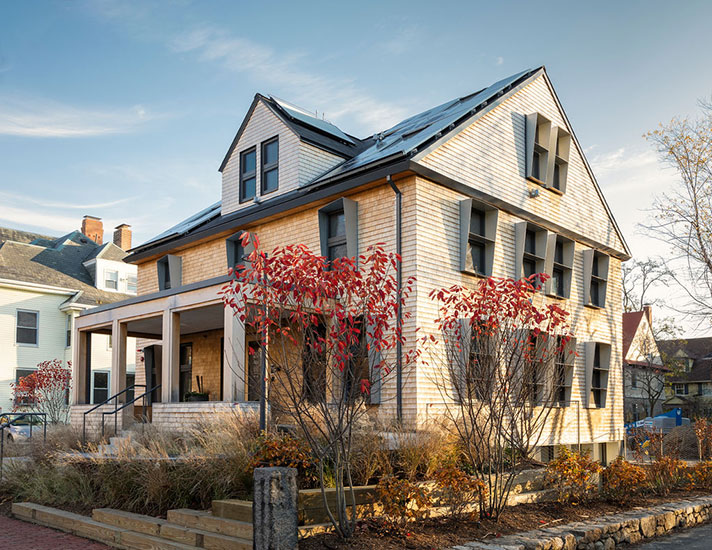
For me, the main question is this: How can a house, that is not being used as a house, serve as a prototype for future houses?
The idea behind HouseZero is admirable. How can re-use existing buildings, and therefore re-use their embodied carbon, when designing a net-zero carbon future? But as Fred Bernstein in his critique in Architectural Record points out, so much of the existing fabric of HouseZero was removed—and a massive amount of concrete was added—that HouseZero has the embodied energy content of a newly constructed house. Bernstein also criticizes the project for being a small office building, not a residence, and he notes that the researchers have released very little data concerning the actual performance of HouseZero.
As a graduate of the Harvard GSD, I am disappointed but not shocked by the apparent performance (or lack thereof) of HouseZero. Culturally, the GSD is more comfortable with sustainability as a theoretical concept than the nuts and bolts of sustainability, such dull but essential stuff as embodied carbon and EUI calculations.